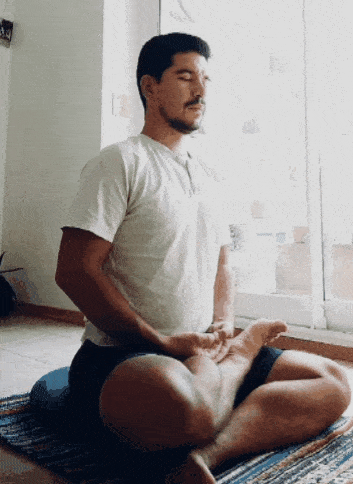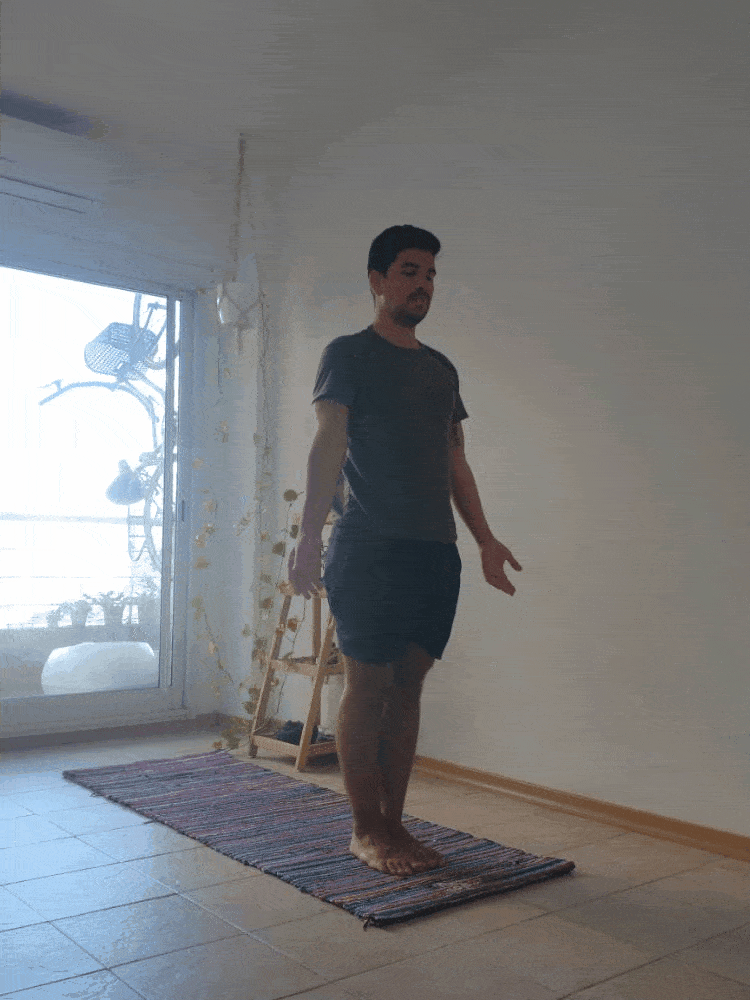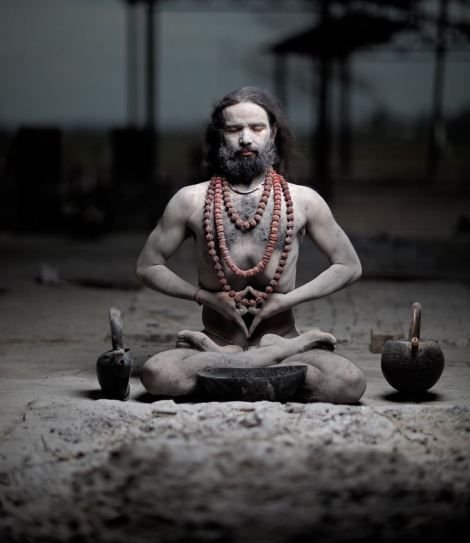¿Qué es el Yoga y cómo nos beneficia? - What is Yoga and how does it benefit us? [ES/EN]
¿Qué es el yoga?
El Yoga es importante entenderlo como un estado de la mente, más que como una práctica física.
Al entender esto, podemos comprender las enseñanzas de muchos maestros a lo largo de la historia. Algunos explican que Yoga es el Estado mental donde las fluctuaciones de la mente no generan perturbaciones y con ello, nuestra manera de ver el mundo es más clara e iluminada. Permitiéndonos así ver las cosas y entenderlas sin generarnos sufrimiento -Dukkha-.
Como dijo Buddha:
Ver las cosas como son.
El Yoga abarca un amplio abanico de actividades como:
Recitación de palabras o silabas sagradas para adoración o meditación -Mantras-, pasando por ejercicios físicos que fortalecen los músculos, estimulan los órganos optimizando su funcionamiento, como los: riñones, estómago, hígado, baso, páncreas, intestinos, glándula tiroidea, órganos sexuales, hasta el cerebro. Y también el Yoga abarca actividades como la meditación, rituales sagrados -pujas u ofrendas- que pueden ayudar incluso a la agricultura -Agni Hotra-(según las escrituras antiguas que son los Vedas).
El Yoga es todo eso, incluso más. Fue creado hace siglos o quizás milendios, desarrollando poco a poco toda esta tecnología. Aunque hoy solo conocemos una pequeña partecita que son esas posturas -Asanas- que se ven en todos lados, como Google o en el Instagram.
El sistema que yo enseño, y que se fundamenta en el sistema filosófico moderno del Yoga, entregado a través de una serie de sutras por Patanjali, se llama Ashtanga Yoga, que significa: Las ocho ramas del Yoga.
- Yamas - Conducta con el mundo y nosotros mismos.
- Niyamas - Conductas en la práctica
- Asanas - Práctica postural
- Pranayama - Control de la energía a través de a respiración
- Prathyahara - Retracción de los sentidos
- Dharana - Concentración
- Dhyana - Contemplación o Meditación
- Samadhi - Liberación
Estas ocho ramas son el camino que Patanjali sugiere para alcanzar ese estado mental donde las fluctuaciones han cesado, con la intención de ver el mundo sin tantos condicionamientos, de una forma limpia y clara.
Una de estas ramas, las Asanas, son las posturas que tanto conocemos.
Las asanas como se explica en muchas fuentes, fueron creadas por los Rishis (o sabios), con la intención de mejorar la salud del cuerpo y mantenerlo en su estado más óptimo para que luego podamos dedicarnos adecuadamente a la meditación, que es dónde hacemos la limpieza profunda de la mente. Donde sanamos todos aquellos condicionamientos que nos hacen ver el mundo, la vida de un modo específico y que en muchos casos nos genera sufrimiento -Dukkha-
Hay textos, como el Hatha Yoga Pradipika que explican que hay tantas asanas como seres existen en el universo. Pero que solo una es realmente importante de aprender que es la postura donde nos sentamos a meditar correctamente para observar la mente en su estado natural.

Que beneficios obtenemos al practicar Yoga.
- Físicamente:
A través de la secuencia y desarrollo de posturas correcta para cada uno de nosotros, limpiamos el cuerpo de las toxinas que adquirimos a través de la alimentacion, de la mala postura al sentarnos, al caminar, al acostarnos o al estar de pie, del sedentarismo y del estrés excesivo.
Como les mencioné antes, nos permiten estimular para optimizar el funcionamiento de los organos del cuerpo, nos permite el estiramiento de los músculos que se encargan de la respiración y con ello, nos permite expandir nuestra capacidad pulmonar y con ello oxigenar mejor todo el cuerpo y adquirir mayor energía que conseguimos gracias a la respiración.
Liberamos las toxinas a traves de la sudoración, si se hace la secuencia adecuada para ello.
Luego, al ir más profundo encontramos que equilibramos tambien adecuadamente el sistema nervioso, estimulamos los nervios que muchas veces estan dormidos, liberamos obstruccion de cavidades por donde pasa la energía (la sangre), despertamos neuronas que han estado dormidas por el desuso, y estimulamos mucho la columna vertebral lo que permite que los impulsos nerviosos recorran el cuerpo de una mejor manera.
Incluso mejoramos la visión a través de las asanas y por supuesto el cerebro.
- Mentalmente:
Trabajamos tanto la concentración en múltiples áreas del cuerpo durante la construccion de las posturas que entrenamos la mente para atender y estar presente junto al cuerpo, que únicamente está "Aqui y Ahora", no en el pasado no en el futuro.
Cuando, con las múltiples prácticas vas atendiendo a la respiración, durante los 60 o 90 minutos que realices las secuencias, tu mente se va entrenando como lo haces con cualquier otra actividad para atender únicamente a eso sin dispersarla en algun otro pensamiento.

Eso es lo que permite la union entre el cuerpo y la mente, la respiración. Ese hilo conductor que une. Que manifiesta al espiritu una y otra vez, con cada inhalación y cada exhalación.

What is yoga?
Yoga is important to understand as a state of mind, rather than a physical practice.
By understanding this, we can understand the teachings of many masters throughout history. Some explain that Yoga is the state of mind where the fluctuations of the mind do not generate disturbances and with this, our way of seeing the world is clearer and more enlightened. Thus allowing us to see things and understand them without generating suffering -Dukkha-.
As Buddha said:
Seeing things as they are.
Yoga encompasses a wide range of activities such as:
Recitation of sacred words or syllables for worship or meditation -Mantras-, going through physical exercises that strengthen the muscles, stimulate the organs optimizing their functioning, such as the: kidneys, stomach, liver, spleen, pancreas, intestines, thyroid gland, sexual organs, up to the brain. And also Yoga encompasses activities such as meditation, sacred rituals -pujas or offerings- that can even help agriculture -Agni Hotra- (according to the ancient scriptures that are the Vedas).
Yoga is all that, even more. It was created centuries or perhaps millennia ago, gradually developing all this technology. Although today we only know a small part of it, which are those postures -Asanas- that you see everywhere, like Google or Instagram.
The system I teach, which is based on the modern philosophical system of Yoga, delivered through a series of sutras by Patanjali, is called Ashtanga Yoga, which means: The eight branches of Yoga.
- Yamas - Conduct with the world and ourselves.
- Niyamas - Conduct in practice.
- Asanas - Postural practice
- Pranayama - Control of energy through breathing.
- Prathyahara - Retraction of the senses
- Dharana - Concentration
- Dhyana - Contemplation or Meditation
- Samadhi - Liberation
These eight branches are the path that Patanjali suggests to reach that state of mind where fluctuations have ceased, with the intention of seeing the world without so many conditionings, in a clean and clear way.
One of these branches, the Asanas, are the postures that we know so well.
The asanas as explained in many sources, were created by the Rishis (or sages), with the intention of improving the health of the body and keep it in its optimal state so that we can then devote ourselves properly to meditation, which is where we do the deep cleansing of the mind. Where we heal all those conditionings that make us see the world, life in a specific way and that in many cases generates suffering -Dukkha-.
There are texts, such as the Hatha Yoga Pradipika that explain that there are as many asanas as beings exist in the universe. But that only one is really important to learn which is the posture where we sit to meditate correctly to observe the mind in its natural state.

What benefits do we get from practicing Yoga.
- Physically:.
Through the sequence and development of postures correct for each of us, we cleanse the body of toxins that we acquire through diet, poor posture when sitting, walking, lying down or standing, sedentary lifestyle and excessive stress.
As I mentioned before, they allow us to stimulate to optimize the functioning of the organs of the body, allow us to stretch the muscles that are responsible for breathing and thus, allows us to expand our lung capacity and thus better oxygenate the whole body and acquire more energy we get through breathing.
We release toxins through sweating, if we do the right sequence for it.
Then, by going deeper we find that we also balance the nervous system properly, we stimulate the nerves that are often dormant, we release obstruction of cavities through which energy (blood) passes, we awaken neurons that have been dormant due to disuse, and we stimulate the spine a lot which allows nerve impulses to travel through the body in a better way.
We even improve vision through the asanas and of course the brain.
- Mentally
We work so much concentration in multiple areas of the body during the construction of the postures that we train the mind to attend and be present with the body, which is only "Here and Now", not in the past not in the future.
When, with the multiple practices you are attending to the breath, during the 60 or 90 minutes that you perform the sequences, your mind is trained as you do with any other activity to attend only to that without dispersing it in some other thought.
That is what allows the union between the body and the mind, the breath. That thread is the breath.

Soy Julio Cesar Arvelo, practicante y profesor de Ashtanga Yoga y Meditación.
- Si te gustó este post y quieres seguir leyéndome, bienvenido a seguirme.
I am Julio Cesar Arvelo, practitioner and teacher of Ashtanga Yoga and Meditation.
- If you liked this post and want to keep reading me, welcome to follow me.
Mi redes sociales:

MINDFUL LIFE is a Natural Medicine project which supports meditators on HIVE
Discord II Community

Amo el yoga! Y ver más contenido sobre esto por aca, me hace sumamente dichosa. Como instructora y prscticante sabemos todo lo que envuelve esta disciplina. Creo que conocernos es la magia q contiene el yoga. Unir todos estos aspectos del Ashtanga, hacer prácticas dentro y fuera del mat, y la aplicación a todo lo que hacemos en nuestra vida. Tanta claridad, me llena de un total agradecimiento. Maravilloso tu post! Me voy feliiiz jaja
A mi también me gusta mucho el contenido de Yoga que compartes en tu perfil.
Muchas gracias por tu comentario. Me alegro haberte hecho feliz con mi contenido. Espero que sigamos en contacto y continuemos compartiendo todo lo que hemos ido experimentando!
Abrazos!